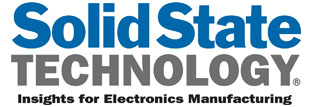



Feature Story
More feature stories by year:
2024
2023
2022
2021
2020
2019
2018
2017
2016
2015
2014
2013
2012
2011
2010
2009
2008
2007
2006
2005
2004
2003
2002
2001
2000
1999
1998
 Return to: 2012 Feature Stories
Return to: 2012 Feature Stories
CLIENT: STANTUM
June 26, 2012: Solid State Technology
June 26, 2012 -- At Display Week this month in Boston, I spent some time with Stantum, a touchscreen development company, speaking with Guillaume Largillier, founder and chief strategy officer and Robert Pelissier, chief executive officer. Stantum had recently announced a major partnership with Nissha Printing Co. Ltd., but the conversation revolved around the many enabling roles that this well-designed touchscreen can play, particularly for the education market.
This isn't the first time education applications have come up in a conversation about displays -- Mariquita Gordon of Texas Instruments referred to the educational display market as an opportunity outside of the traditional realm when I spoke with her a few months ago.
Stantum's Largillier and Pelissier pointed out that touchscreens can do much more than replace a mouse and computer monitor -- multitouch and connectivity allow students to interact with teachers and manipulate information on their screens to learn in a more natural and engaged way. Technology in a classroom is no guarantor of success, but technology that brings students into the lesson can vastly improve understanding and information retention. We spent some time in Stantum's demo room at the show playing with the touchscreens, experiencing the different touch inputs' enabling properties.
FineTouch Z multi-touch touchscreen technology is able to combine -- on one sensor -- finger and passive stylus input. FineTouch Z is powered by Stantum's Interpolated Voltage Sensing Matrix (iVSM) touch-and-write technology. This is a less expensive combination than finger + active stylus (electro-magnetic or a battery-powered) technologies, which use electromagnetic resonance (EMR) sensors on the bottom of the panel and projected capacitance (PROCAP) sensors on the top. It also results in a simpler and thinner display. FineTouch Z boasts optical clarity and works with any type of conductive or non-conductive object, Stantum reports.
The stylus and finger input combine to enable content creation or highlighting on a device -- for example a tablet in a classroom -- much like a user would work on paper. As many as 10 simultaneous touches can be combined with high-resolution handwriting input. The interactivity inherent in electronics leads to project sharing, note taking, and textbook replacement all on one display.
Stantum's representatives pointed out that countries -- Brazil and Turkey to name a few -- are seeking solutions to phase out paper textbooks. If touch technologies can bring the enhanced performance, reliability, and price benefits in one simple package, the education market could be a high-volume and enduring end-use sector.
Return to: 2012 Feature Stories